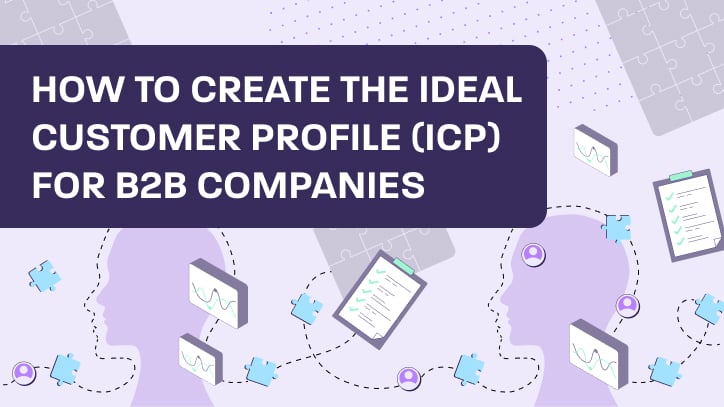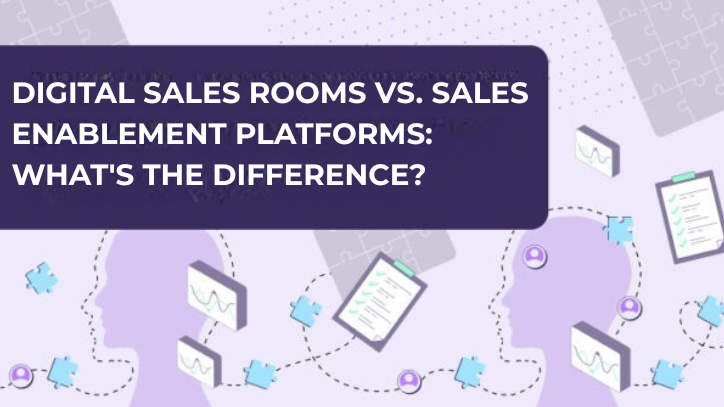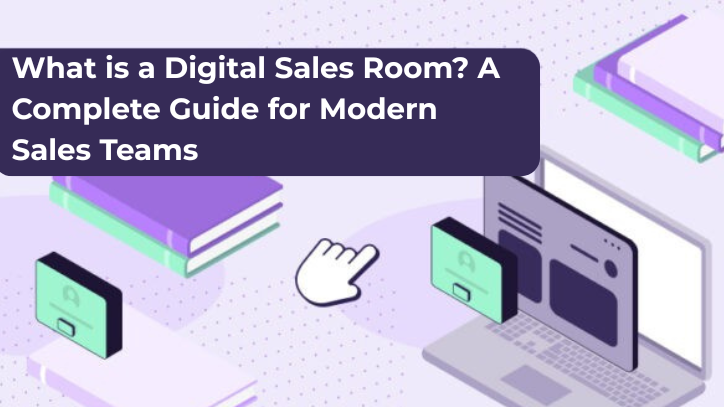Identifying the right customers is crucial for any business, and that is especially the case in B2B markets. That is because this is where long sales cycles and high-value deals make targeting the right clients a top priority. This is where an Ideal Customer Profile (ICP) comes into play.
An ICP helps B2B companies focus their efforts on organizations that are the best fit for their product or service, maximizing efficiency, profitability, and customer satisfaction.
Many businesses make the mistake of chasing any potential lead that expresses interest, only to find that they struggle with customer churn, misaligned expectations, and wasted resources.
By clearly defining an Ideal Customer Profile, businesses can refine their sales and marketing strategies to attract and retain customers who will derive the most value from their offerings.
What is an ideal customer profile?
An Ideal Customer Profile is a detailed description of the type of company that is the best fit for your business. Unlike a Buyer Persona, which focuses on individual decision-makers, an ICP defines the characteristics of an ideal organization that would benefit most from your products or services.
In B2B and Account-Based Marketing (ABM), an ICP acts as a blueprint for identifying high-value customers. Think of it as a fictional representation of a company that would be the perfect match for what you offer. This ideal customer aligns with your sales team’s efforts, has the right budget, is in the right industry, and has specific needs that your solution addresses.
Key characteristics of an Ideal Customer Profile include:
- Industry: The sectors or verticals where your solution works best.
- Company Size: Employee count, revenue, or growth stage.
- Location: Geographic regions that align with your business strategy.
- Budget: The financial capacity to afford your solution.
- Pain Points: Common challenges your product or service resolves.
- Tech Stack and Infrastructure: Existing tools or platforms they use that integrate with your solution.
Defining an ICP allows businesses to prioritize high-quality leads, improve marketing efficiency, and increase customer retention by ensuring that they attract organizations that are truly a good fit.
What’s the difference between buyer persona and ideal client profile?
While both Buyer Personas and Ideal Client Profiles are essential for targeting the right audience, they each have their own distinct purposes.
| Buyer Persona | Ideal Client Profile |
| A semi-fictional representation of individual decision-makers based on real data and market research. | A company-level description that identifies the best fit for your products or services. |
| Focuses on demographics, psychographics (motivations, fears, behaviors), and purchasing behaviors of a single buyer. | Focuses on firmographic data such as industry, company size, location, and revenue. |
| Helps tailor marketing messages and sales strategies to resonate with specific individuals. | Helps identify and target companies that align with your ideal business prospects. |
A Buyer Persona is developed after defining the ICP, not before.
Many companies mistakenly create Buyer Personas first, without understanding the types of businesses that are best suited for their offerings. This leads to ineffective marketing strategies and wasted efforts on leads that do not convert.
Instead, businesses should first establish their Ideal Customer Profile, then use that foundation to develop Buyer Personas for key decision-makers within those companies.
This approach ensures that every marketing and sales effort is aimed at the right businesses and the right people within them.
Why is defining your ideal client profile important for B2B companies?
In B2B sales, efficiency and focus are key. Without a clearly defined Ideal Customer Profile, businesses risk wasting time and resources on leads that will never convert into long-term, profitable customers.
Here’s why establishing an ICP is essential:
Higher conversion rates and better ROI
By targeting only companies that are a great fit, sales teams can spend less time chasing low-quality leads and more time closing deals with high-value clients. Companies that refine their ICP often see an increase in average deal size and lifetime customer value.
Lower customer churn
Businesses that onboard customers who are a poor fit often experience high churn rates. These customers may not fully benefit from the product or may have unrealistic expectations. By defining an ICP, you attract customers who genuinely need and appreciate your solution, leading to longer relationships and greater retention.
Better alignment between sales and marketing
An ICP ensures that marketing teams generate leads that the sales team actually wants to pursue. This alignment eliminates wasted efforts and increases efficiency across both departments.
Product and service optimization
Understanding your Ideal Customer Profile helps your business refine and improve its offerings. If you know exactly who your best customers are and what challenges they face, you can tailor your products or services to meet their evolving needs.
Scalability and market positioning
Having a well-defined ICP allows businesses to scale strategically by focusing on the most profitable customer segments. It also strengthens market positioning by establishing a clear niche and authority in a specific industry.
Building an Ideal Customer Profile is far more than just a marketing exercise. It’s a foundational step that impacts sales, retention, and overall business growth.
For B2B companies looking to scale efficiently and increase revenue, defining and refining the ICP is one of the smartest strategic moves they can make. In the next sections, we’ll dive into how to create an ICP and use it effectively to drive business success.
How to create an ideal customer profile
Creating an Ideal Customer Profile requires a strategic approach rooted in data and analysis. Instead of casting a wide net and hoping for the best, businesses should focus on identifying the characteristics of their most successful customers.
This process involves analyzing existing customer data, recognizing patterns, and segmenting prospects based on their firmographics, pain points, and goals. The more refined your ICP, the more efficiently your marketing and sales teams can attract high-value customers.
Below, you’ll find the key steps to building an effective ICP that aligns with your business objectives and maximizes conversion potential. And for the sake of greater familiarity, we’re using MailChimp as an example:
Define your core customer attributes
Before you can build an ICP, you need to identify the core attributes that define your best-fit customers. These include firmographics like industry, company size, revenue, and location.
For instance, MailChimp may find that its ideal customers are mid-sized e-commerce businesses generating $1M+ in annual revenue and needing robust automation features.
Identify their pain points and goals
Understanding the challenges your customers face helps you craft targeted solutions.
MailChimp’s ideal customers may struggle with customer retention, email deliverability, or segmentation. By identifying these pain points, the company can create messaging that directly addresses these concerns.
Conduct market research and analyze data
Leverage customer interviews, surveys, and CRM data to validate your assumptions.
If MailChimp notices that businesses in the fashion industry have a higher lifetime value, it can refine its ICP accordingly.
Establish relevant customer segments
Segmenting your audience ensures more personalized marketing.
MailChimp could categorize customers into startups, enterprise clients, and non-profits, tailoring messaging for each.
Create a shopping persona for each segment
Develop detailed descriptions of each segment.
For example, a MailChimp persona might be “Growth-focused E-commerce Owner,” a 35-year-old business owner looking to scale email marketing efforts efficiently.
By following these steps, B2B companies can ensure they attract the right customers, maximize conversions, and drive long-term success.
Implement and refine your ICP
Once your ICP is in place, track your results and make necessary adjustments. Businesses evolve, and so do their customers.
MailChimp might discover new emerging segments and refine its ICP accordingly.
By following these steps, B2B companies can ensure they attract the right customers, maximize conversions, and drive long-term success.
How to use your ICPs
At this point, it goes without saying that simply creating an Ideal Customer Profile is just the beginning. That’s because its real value lies in how you apply it across your business operations. An ICP is a powerful tool that helps align marketing, sales, and customer success strategies, ensuring that all efforts are directed toward acquiring and retaining the right customers.
By leveraging your ICP effectively, you can streamline lead generation, improve conversion rates, and optimize resource allocation to focus on high-value prospects rather than wasting time on unqualified leads.
For marketing teams, ICPs enable more precise targeting through content, paid ads, and email campaigns tailored to the right audience. Meanwhile, sales teams can benefit from ICPs with shorter sales cycles and higher close rates by prioritizing prospects that fit the profile and personalizing pitches accordingly. Additionally, customer success teams can use ICP insights to improve retention by ensuring that new customers align with your long-term business goals.
Whether you are refining your ad targeting, building sales pitches, or crafting personalized demos, an ICP provides the clarity and direction needed to optimize every interaction.
Below, we’ll explore how you can integrate ICPs into your marketing and sales efforts to drive measurable results and business growth.
For marketing
Your Ideal Customer Profile plays a vital role in shaping your marketing strategy.
By understanding your ICP, you can:
- Develop highly targeted content marketing strategies that address the specific needs and pain points of your ideal customers.
- Leverage social media advertising to target decision-makers based on job titles, industry, and business needs.
- Use email marketing to nurture potential leads with personalized sequences that guide them through the sales funnel.
For sales
Sales teams can use ICPs to:
- Prioritize leads that match the ICP criteria, ensuring time is spent on prospects most likely to convert.
- Tailor sales demos to focus on features and benefits that directly address the pain points of potential clients.
- Use past customer data to suggest complementary products or services, increasing upsell opportunities.
Create demos for your ICPs
One of the most effective ways to engage potential customers is through personalized sales demos. That being said, companies like Walnut are revolutionizing B2B sales by offering interactive and customized demos that showcase exactly how a product fits into the prospect’s workflow.
Instead of generic presentations, businesses can now craft tailored experiences that directly speak to the specific challenges and goals of their ICPs. By leveraging platforms such as Walnut, sales teams can increase engagement, shorten sales cycles, and improve conversion rates by delivering compelling, relevant product demonstrations.





